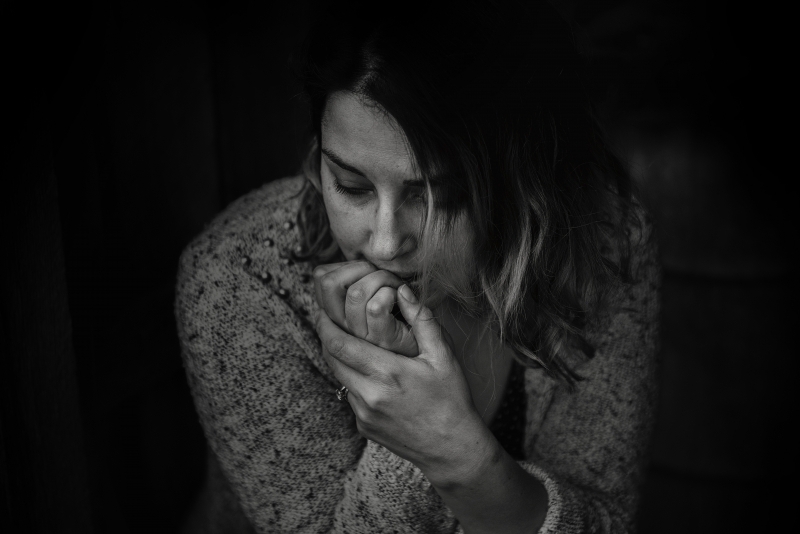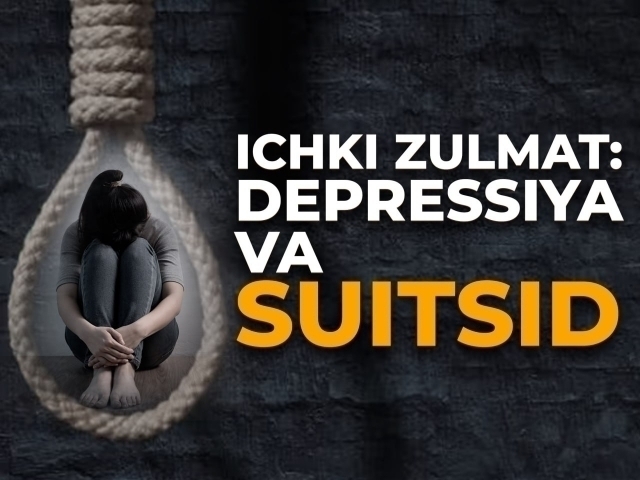Depression and suicide: Growing concern in Uzbekistan
Interviews
−
10 February 17972 8 minutes
According to the World Health Organization, 3.8% of the world's population is depressed, and more than 700,000 of them commit suicide every year. Recently, we have been seeing a lot of news about Uzbeks jumping from high floors or bridges and hanging themselves. In 2024 alone, there are dozens of examples of suicides reported in the media. Not so long ago, three days ago, the Prosecutor General's Office reported that a 17-year-old girl from Kashkadarya committed suicide by jumping from the roof of a 16-story building. Perhaps the enemy that led the schoolgirl to this decision was depression. So, what kind of disease is depression, the invisible killer inside a person? QALAMPIR.UZ turned to a specialist with these and other questions to call readers to be vigilant.
Iqbol Ergashova, correspondent: — Please elaborate on depression and its diagnosis.
Zebiniso Ahmedova, psychiatrist: — There are two types of depression: endogenous and exogenous. Endogenous means depression that is passed down from generation to generation. That is, some people may have symptoms such as lack of mood, lack of interest in anything, and suicidal thoughts in their genes. There can also be situational, that is, situational depression. For example, someone's parents die, or their child is hospitalized, and at such a time, a person may fall into situational depression. In addition, there is also bipolar affective disorder, in which the patient suddenly feels like doing something, but after a while, he suddenly falls into a depressive state again, and the world becomes dark. In addition, there is a depressive character, which shows the superiority of negative thoughts over positive ones. When talking to such a person, you can see that he always frowns and thinks more about bad things. But this is not his illness; this is his character. A person knows that such a character in him is bad but continues to live like this.

According to the world standard, to diagnose a depressive illness, the following three complaints must be observed within 14 days:
- Lack of mood. Suppose this lasts up to 6 hours - a mild form, if it lasts up to 12 hours - a moderate form if it lasts up to 24 hours - a severe form. At this time, a person does not want to do anything or talk to anyone; there is no desire, emotions do not change, and light and noise do not like;
- Anhedonia. In this case, a person does not enjoy anything: a laughing child, a new car, a new house - nothing gives pleasure;
- The brain does not rest from anything. That is, they cannot rest when they sleep.
If a person has these three signs and they last for 14 days, we can diagnose this person with depression. If a person has 2 of these three signs, we look for the following seven other minor signs:
- Lack of sleep or too much;
- Not eating or eating too much and not enjoying the food they eat;
- Lack of attention;
- Self-blame;
- Memory loss. (A person cannot remember anything: they forget what they did recently, where they went; they remember difficult memories from the past very well);
- Lack of physical activity;
- Suicidal thoughts.
In addition, there are signs of depersonalization and derealization. Depersonalization is a feeling of alienation from oneself. Derealization is a feeling that the world is lifeless. If suicidal thoughts and depersonalization occur together, the likelihood of a person committing suicide increases.
I.E.: — What methods are effective in treating depression?
Z.A.: — We have treated endogenous depression with medication for years. If the patient's thoughts of "I want to kill myself" do not disappear, electroconvulsive therapy is performed. In this case, the thought "I want to kill myself" is erased by applying an electric current to the brain. That is, electroconvulsive therapy is performed so that a person does not commit suicide. In cases of mild depression, psychotherapy methods are used in combination with antidepressant drugs. We use these and several other psychotherapeutic methods that are recognized when the human brain cannot save itself. I must say that in mild forms of depression, that is, in cases of bad mood and inability to get out of difficulties, folk methods can be used. These can be methods of going on a trip, talking to people you like, reading motivating books, or watching movies. In Uzbekistan, people often get dopamine from food; they hardly know other methods. This hormone of happiness can also be obtained from physical exertion. Previously, there were elections to get dopamine. The Nodirabegims played the Tanbur. Now, people have stopped playing the tanbur; they have not left Instagram. I think that Instagram has at most 50 years left before its life ends. Because people's eyesight will start to deteriorate, they will get depressed and start saying why am I not like that. The YouTube platform may become relevant as people are forced to expand their shortened attention spans.
I.E.: — You talked about treating the brain with electricity. Probably not many people have heard of this therapy. How effective is it?
Z.A.: — I studied this in Turkey. There are still very few such devices in Uzbekistan. This method is used only in cases of depression and schizophrenia. I must say that this can have negative consequences. For example, I had a patient with suicidal tendencies undergo this therapy. When I talked to him after the operation, he told me that he no longer felt anything. That is, he does not have the same mood, he is not as active as before. Even if he does something, he does it not because he wants to but because he thinks he has to.
I.E.: — How does depression manifest itself in the body?
Z.A.: — Pain can be observed in various parts of the body. In addition, there is an atypical type of depression. In this case, a person may not even know that he is depressed. There is a concept called the Chicago Seven, according to which the following diseases occur as a result of psychological stress: stomach and duodenal diseases, cardiovascular diseases (obesity and cancer), endocrine system diseases, bone diseases, bronchial asthma, and incurable skin ulcers.

The body has enough strength to overcome these diseases, but due to depression, the body can lose. In addition, constant fatigue, lack of good thoughts in the brain, weight gain, migraines, and similar headaches, spontaneous nausea are also signs of depression in the body. For information, we can add that a waist circumference of more than 85 centimeters in women and 97 centimeters in men is a manifestation of depression manifested by obesity.
I.E.: — Do children also get depressed? How does this happen to them?
Z.A.: — The family gives the child an optimistic and pessimistic foundation. The pessimistic foundation comes in two forms: whining and threatening. In both forms, a depressive child is raised. For example, in a family where whining phrases such as “It’s not possible,” “don’t be harsh,” “you can’t do it,” “I thought about it all night,” and “I was worried about where you were,” children are more likely to be afraid of trivial things and get stressed. Signs of depression in children include bedwetting, frequent colds, moodiness, vomiting, stubbornness, and inability to sleep at night. In this case, it is strongly recommended to go to the doctor and not to use any medications and bioactive supplements arbitrarily.
I.E.: — What should a person do to get out of depression?
Z.A.: — First of all, endogenous depression should not be ignored. In addition, it is also necessary to know who to contact. Usually, they turn to a neurologist. Doctors also make neurological diagnoses, and as a result, the patient's family members simply assume that he has a neurological disease or is just nervous. A superficial view of the condition of a depressed person, both by those around him and by himself, can lead to bad consequences. Sometimes, young people who are not married, even after 30, are asked various questions. But they do not think that they may be depressed. They may need good and qualified psychotherapeutic help.
 Now, some psychologists, without thinking about the consequences and not considering their lack of qualifications, are claiming to overcome panic and fear (diseases) for PR. There is a difference between PR and branding. Even if qualified psychologists do not advertise themselves, people continue to come to them thanks to the recommendations of patients who have benefited from them.
Now, some psychologists, without thinking about the consequences and not considering their lack of qualifications, are claiming to overcome panic and fear (diseases) for PR. There is a difference between PR and branding. Even if qualified psychologists do not advertise themselves, people continue to come to them thanks to the recommendations of patients who have benefited from them.
Several “psychologists” claimed to teach women how to get money from their husbands. The husbands did not give them money, did they? Why did many such psychologists jump to treating panic and neurosis? Because people did not come to them! Because they did not believe. Because they filled notebooks with gratitude. Not for writing, but gratitude! Gratitude is shown in actions!
Live
All




